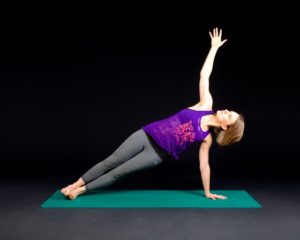Get. Your. Lift. On!
Strength training is a common practice among many recreational athletes. But for some individuals, the concept of strength training remains a mystery and the very idea of engaging in such an activity sends them swiftly running in the other direction. The truth: including strength training as part of a lifestyle is one of the most effective ways of enhancing health and well-being for both the body and the mind.
As time marches on, lean tissue (muscle mass) begins to decline. As a result, metabolic rate slows, body fat increases, joints lose flexibility, and daily tasks become more difficult and taxing to accomplish. There is good news! By adding resistance exercises, we can limit age-related muscle loss. The hardest part is just getting started, but with a few helpful tips, building strength – at any age – is achievable.
- Set a goal. Determine a training frequency that fits your lifestyle and needs.
- Start slow. If you do not have prior weight training experience, it is best to start out slow with a manageable routine. Begin with 2 days a week and progress from there.
- It’s all about the form. It is critical to learn the proper way to perform an exercise. Using proper form will avoid injury and lead to the desired outcome. If you are unsure how to do an exercise ask for assistance from a qualified professional (someone with a reputable certification – not a .com “I’m a personal trainer because I took a 50 question multiple-choice test and guessed well”).
- Present a challenge. In order to become stronger, muscles need a challenge. Perform resistance exercises at a level beyond what the muscles are accustomed to experiencing.
- Rest and recovery: Just like our minds, our muscles need rest to rebuild and recover. It is best to give muscle groups a 48 hour recovery period in between workouts. This means if you worked lower body on Monday you would wait until Wednesday before repeating the routine.
- Home or Gym? Research the different options. Strength training does not have to be done in a gym. Resistance bands and medicine balls are great tools in addition to dumbbells and machines. Remember, body weight is also resistance! The choice is yours. It’s the effort, commitment, and consistency that really matter!
- Be wise. It is always a good idea to seek medical clearance and/or advice before beginning or changing a routine. Consider informing your primary care physician or other healthcare professional of your plans.
In addition to increased lean tissue, improved bone-density, increased metabolic rate, increased strength of tendons and ligaments, and enhanced joint range of motion, resistance training is an effective way to relieve stress and manage daily tasks with ease. So, don’t be afraid – throw your weigh around. Your body and mind will thank you!


0 Comments